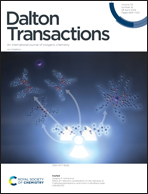A microporous bismuth-based MOF for efficient separation of acetylene from carbon dioxide†
Abstract
The separation of acetylene from carbon dioxide is challenging due to their almost identical molecular sizes and volatilities. Metal–organic frameworks (MOFs) in general are strong candidates for the separation of gas mixtures owing to the presence of functional pore surfaces that can selectively capture specific target molecules. Herein, we report a stable and easily synthesized bismuth-based MOF, Bi–BTC, which can achieve the separation of acetylene and carbon dioxide. We performed a detailed analysis of the sorption properties of the Bi–MOF. Bi–BTC shows good adsorption capacities for C2H2 with a capacity of 53.8 cm3 g−1 at 298 K and 1.0 bar, and C2H2/CO2 selectivity of 5.14/7.69 at 298 K and 1.0/0.1 bar. IAST selectivity calculations indicate that Bi–BTC possesses good separation capacity, and dynamic breakthrough experiments were performed to prove the separation of C2H2 and CO2. Bi–MOFs as a group of relatively less studied types of MOFs have interesting adsorption characteristics, and this study on Bi-based MOF will enrich three-dimensional Bi–MOF adsorbents for gas adsorption and separation applications.



 Please wait while we load your content...
Please wait while we load your content...